
Dentist
BDS
GDC Number: 244409
I graduated from King’s College London in 2013 and worked as a general dentist in South London for six years before joining Crescent Lodge in 2019.
I absolutely love my job and am passionate about providing the highest quality care for my patients and this is my top priority. I frequently attend post-graduate courses to enhance my practical skills and theoretical knowledge and always aim for the highest standards. I also enjoy teaching some of the latest restorative techniques to dentists on postgraduate courses on restoring teeth with direct composite materials.
My approach consists of the use of clinical photographs and X-rays to explain findings to my patients. This ensures that they fully understand all diagnoses and we can discuss treatment options together. This is incredibly important as my patients have no questions left unanswered and their needs and worries can be fully discussed prior to treatment.
I like to deliver dentistry in a relaxed and respectful manner, many of my patients even go as far as saying that they now look forward to their visits to the dentist.
I have a special interest in rebuilding damaged teeth so my patients can keep their own teeth for longer (nothing beats your own teeth!). I have trained in Seattle with Dr John Kois to learn the latest methods in rehabilitating complex cases. Was a finalist in the Private Dentistry Awards ‘Young Dentist Of The Year’ and Clinical Case Awards in 2022.
I especially appreciate the use of adhesive dental materials and dental bonding, which allows me to perform less invasive procedures which maintain the natural tooth structure. In addition, I like to restore worn teeth with composite bonding rather than more invasive options wherever possible (see case below). Am a member of the British Academy of Aesthetic Dentistry and enjoy providing aesthetic dentistry to restore smiles, and have been an Invisalign comprehensive provider since 2016.
I am experienced in alleviating patients with facial pain and bite problems and have trained with the British Society of Occlusal Studies to learn the most current modalities of treating jaw pain and protecting teeth. This ranges from tailored bite splints or SCi devices (sleep clench inhibitors) depending on the cause and type of pain.
As an alternative to dental implants, I provide lifelike dentures and construct precise fitting cast chrome dentures. I have trained with specialist prosthodontists in this field and use the most up-to-date materials and methods to accurately match the appearance of natural-looking gums and teeth. This approach results in high-quality dentures which are both extremely comfortable and secure.
Outside of work, I enjoy travelling, hiking and keeping fit. I am a big motorsport enthusiast and race karts competitively around the UK.
See my instagram for more cases https://www.instagram.com/drhussainrashid
-Hussain Rashid

This 85 year old patient attended with her daughter, who was an existing patient of mine.
The patient had lost the majority of her teeth so was self-conscious when talking or smiling – she had missing teeth for 20 years and it was really affecting her self esteem when talking to people. She said she had lost teeth because ‘she was always more worried about her kids than herself’. She said none of her grandchildren had ever seen her with teeth.

Her previous dental experience consisted of the dentist she went to extracting teeth as they broke and she was recently told there was nothing that could be done apart from implants due to the bite.
She had had a denture made but found it very uncomfortable but would force herself to wear it when socialising. It no longer fit due to her stopping wearing it. Her main desire “Want to try and keep all my teeth” and “Be able to smile normally”
Both the patient and her daughter wanted to avoid implants as per patient’s age and for monetary reasons and the patient really wanted to keep hold of her existing teeth.
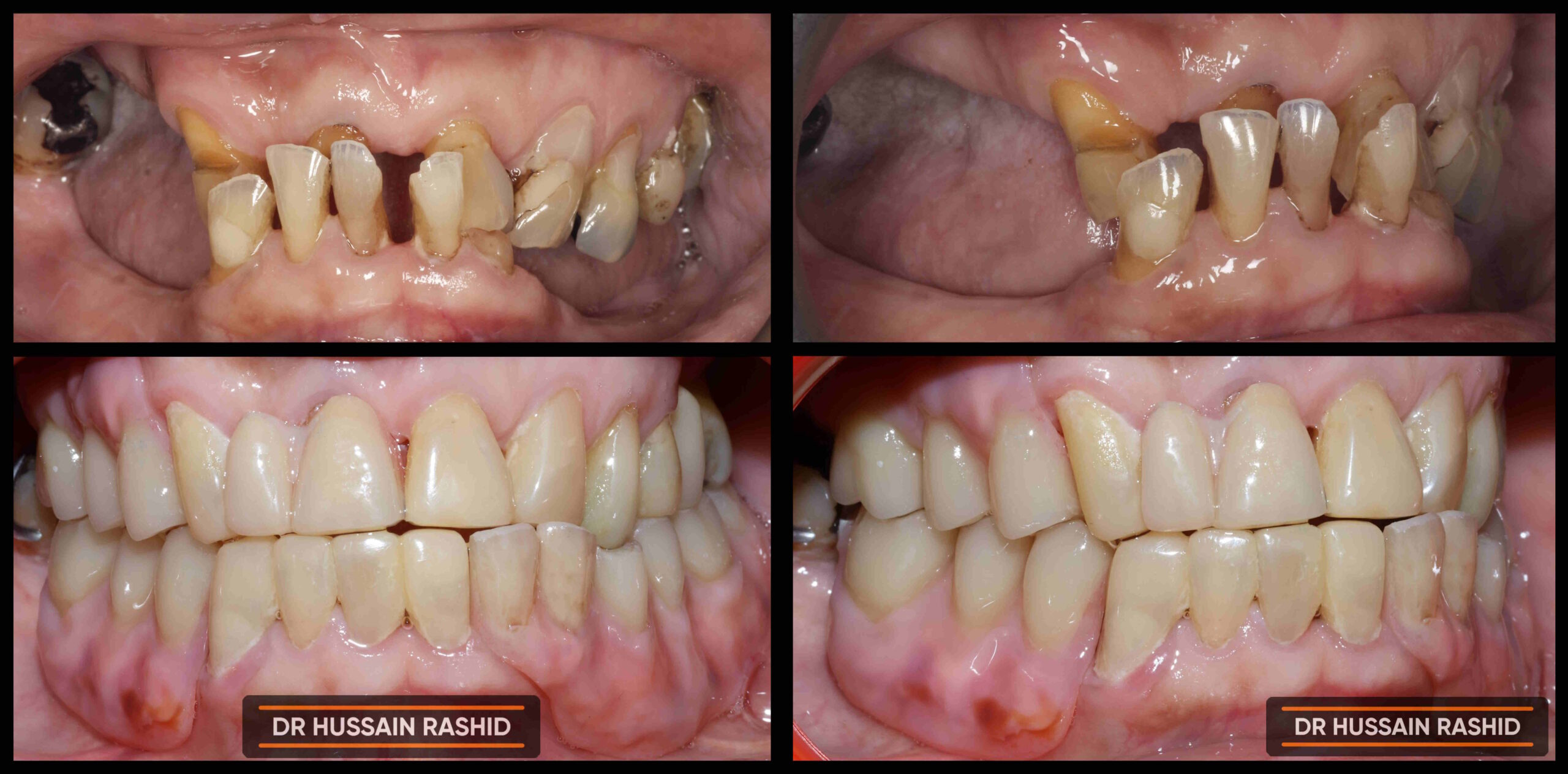
Because the lower teeth were in front of the upper teeth we decided to make a training denture consisting of lower acrylic baseplate opposing an upper acrylic denture. The lower plate would ensure a smooth platform and equal bite contacts to allow the lower muscles to relax. The patient wore this for 2 months and in that time the lower jaw shifted to a more edge to edge position.

This also confirmed the patient could wear dentures long term so gave us the green light to begin restorative work. We first did whitening of the teeth (Philips Day-white using whitening trays)
I then carried out 4 root canal treatments on the lower incisor teeth and reduced the heights and rebuilt them freehand with composite but angled to allow better edge-to-edge positioning. Then I carried out direct composite veneers on some of the upper teeth to improve aesthetics.
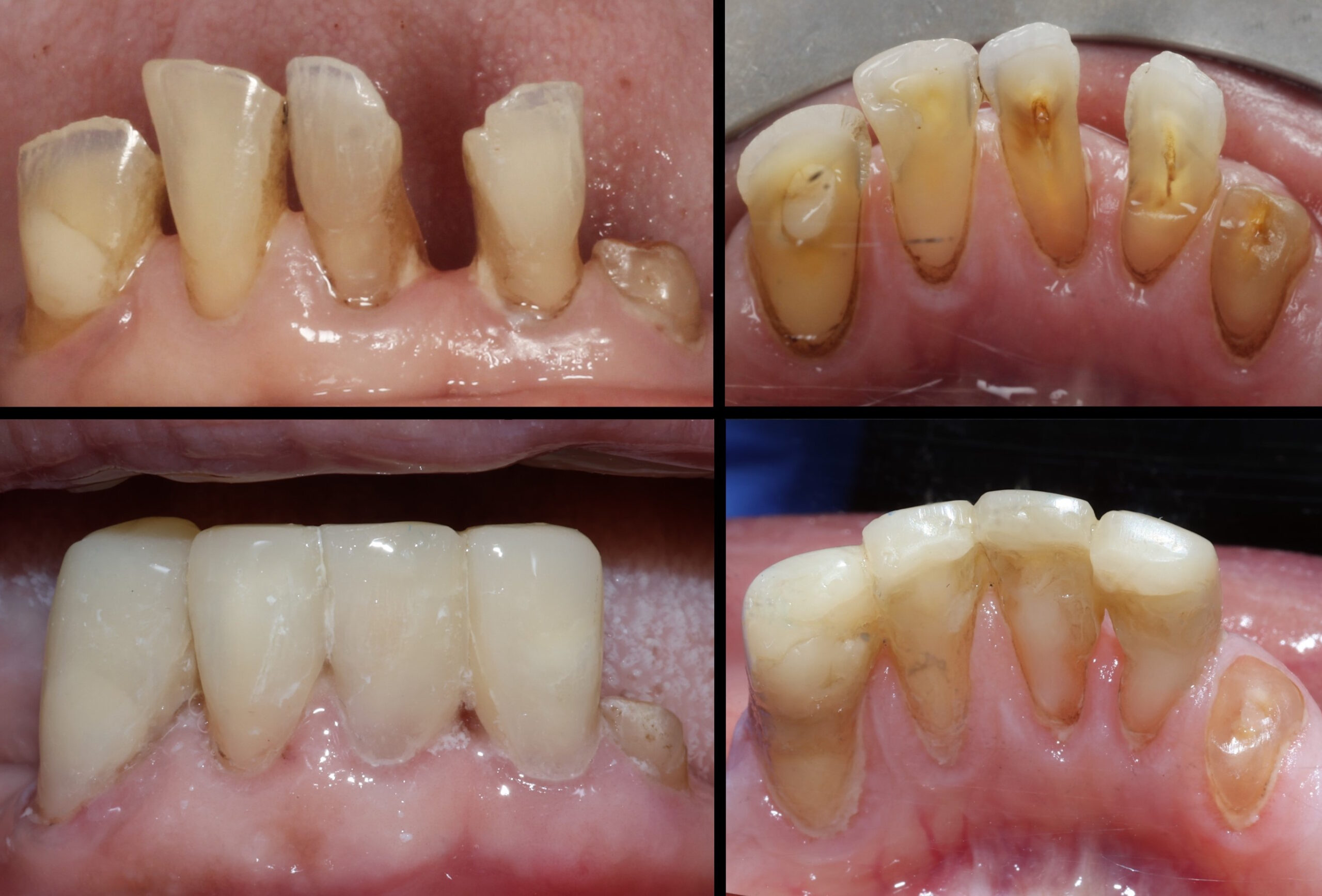
Denture impressions were made using border moulding with custom made impression trays to ensure maximum accuracy. A metal framework was used to help stabilise the denture to the existing teeth and ensuring good colour of the gums due to pigmentation of gum.
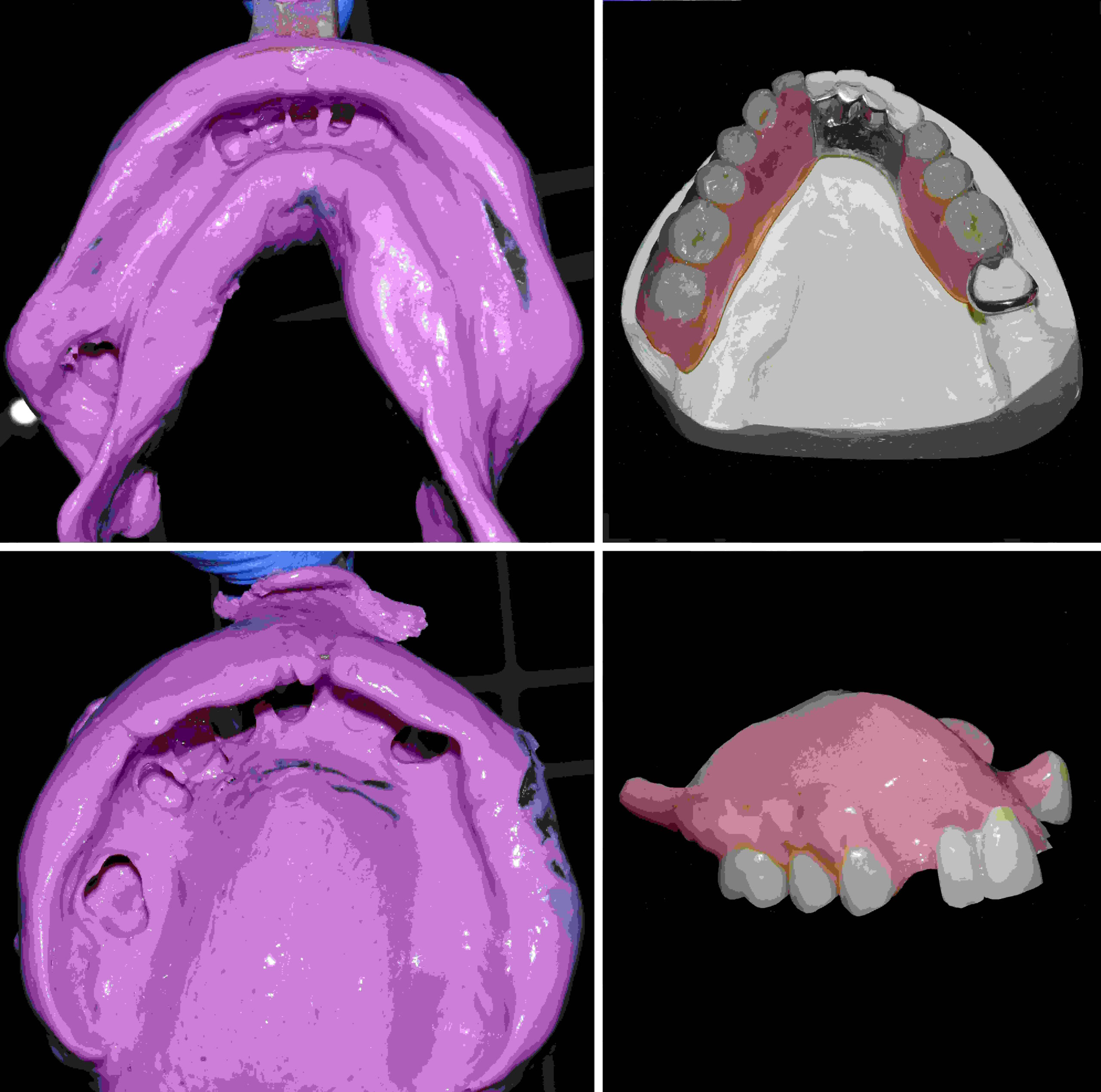
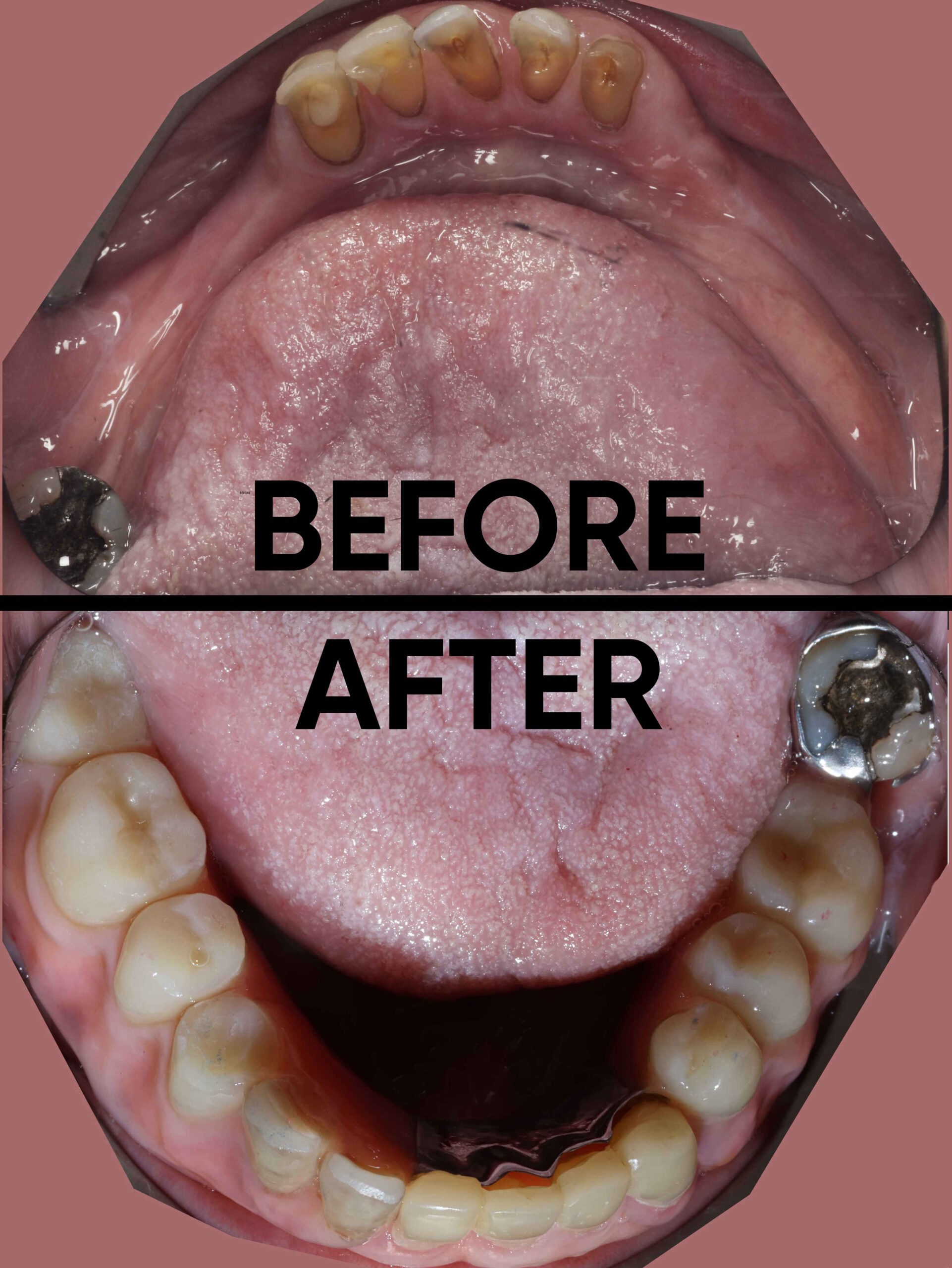


Patient presented with severe erosive wear on both the outer and inner surfaces of the front 6 teeth caused by fizzy drinks. There is significant enamel loss and loss of tooth thickness and height, and visible darkening of the teeth. In these situations, I prefer to treat in the most conservative way possible – so instead of removing further tooth structure (by constructing crowns) composite bonding can be added to the teeth and shaped by hand in the chair. I also decided to change the bite – by bulking out the inside of the front 8 teeth). This is done in order to stop any further wear to the insides of the thin teeth, and it creates further space for fixing some of the damaged back teeth.

I prefer to hand sculpt a 3d template of the desired teeth out of wax myself prior to treatment. This allows me to have exact control of how I would like the teeth to look and function in the bite.
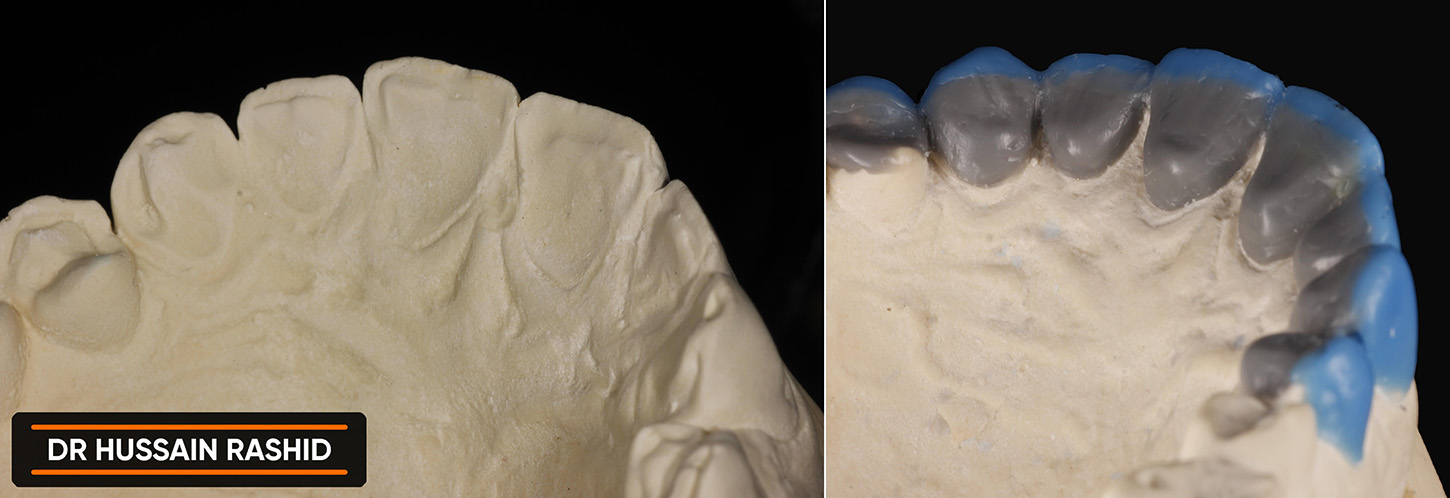
Once the patient and I were happy we did one session of bonding to build the front 6 teeth with composite – this was done with layers of dentine and enamel to add more realism to the appearance of the teeth – and once the space was created I then hand built the back 3 worn teeth out of composite. The image shows the rebuilt biting surfaces of the lower back (molar) teeth.

With some initial tooth whitening, lengthening of the teeth, and improved shape, composite bonding provides an extremely strong, lifelike and beautiful end result which transformed the patients smile. Most importantly it also prevents further wear and this should give the patient a healthy smile for years to come.





This patient attended with a plastic upper denture which was not only loose but looked unnatural. The lower teeth only 10 teeth were present and we wanted to add more teeth to chew with.

We wanted to construct a new upper chrome-based denture, and after discussion with the patient we decided to keep the healthy canine tooth and use it to support the denture by directly adding a small composite bonding on the back to act as a grip for the denture. Chrome is preferred over acrylic as it adds strength (acrylic is liable to fracture), can more effectively use natural teeth for support, and is thinner and more comfortable to wear.
On the lower arch we decided to extend the dental arch with no preparation Maryland bridges stuck directly on top of the existing teeth with no preparation work needed, and no need for implants. We decided to place a white opaque layer of porcelain over the wings of the Maryland to improve the aesthetic result at patients request. On image, the upper is uncemented bridges. On lower the bridges permanently cemented in. The orange line demarcates exactly the same point before and after cementing the bridges
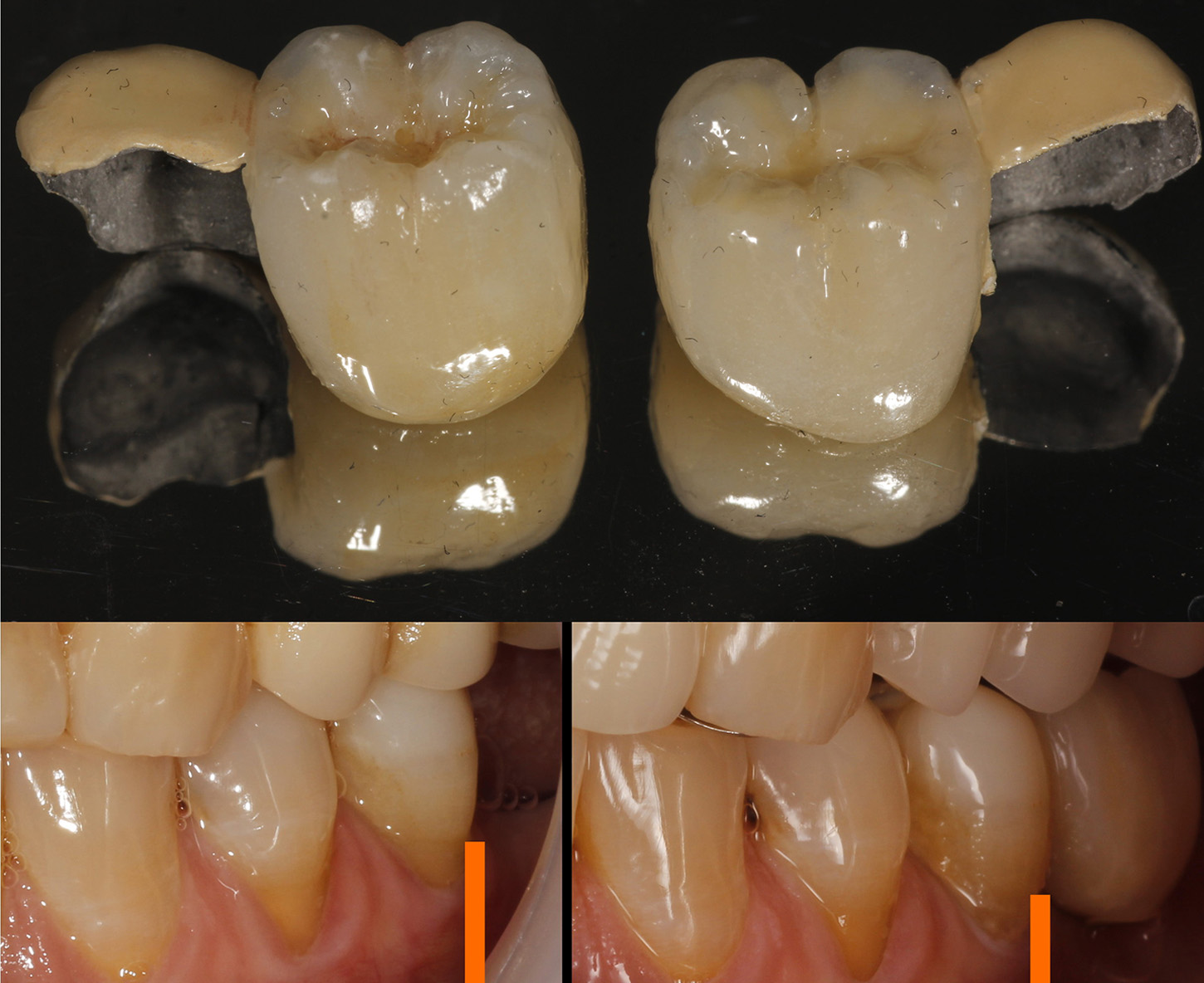
The upper front tooth (in front of the canine) was extremely badly damaged but instead of removing it we decided to seal this tooth to avoid the patient requiring extractions and also prevent changes in the shape of the bone.
An extremely accurate impression was taken using a border moulding technique which makes the denture much more retentive in the mouth, so it stays sucked into place even whilst chewing (upper left on image). An additional measurement was carried out to ensure the correct and comfortable positioning of the teeth. This involved using a plate of plastic clipped on the lower teeth and a ‘stylus’ on the lowers to draw a trace of the most relaxed jaw position for the teeth to sit (see upper right and lower right images)

The final fit of the denture was excellent with excellent aesthetics and no need for any denture fixative. The lower extension allowed more teeth for chewing. The patient was extremely satisfied with the end result and her new smile.


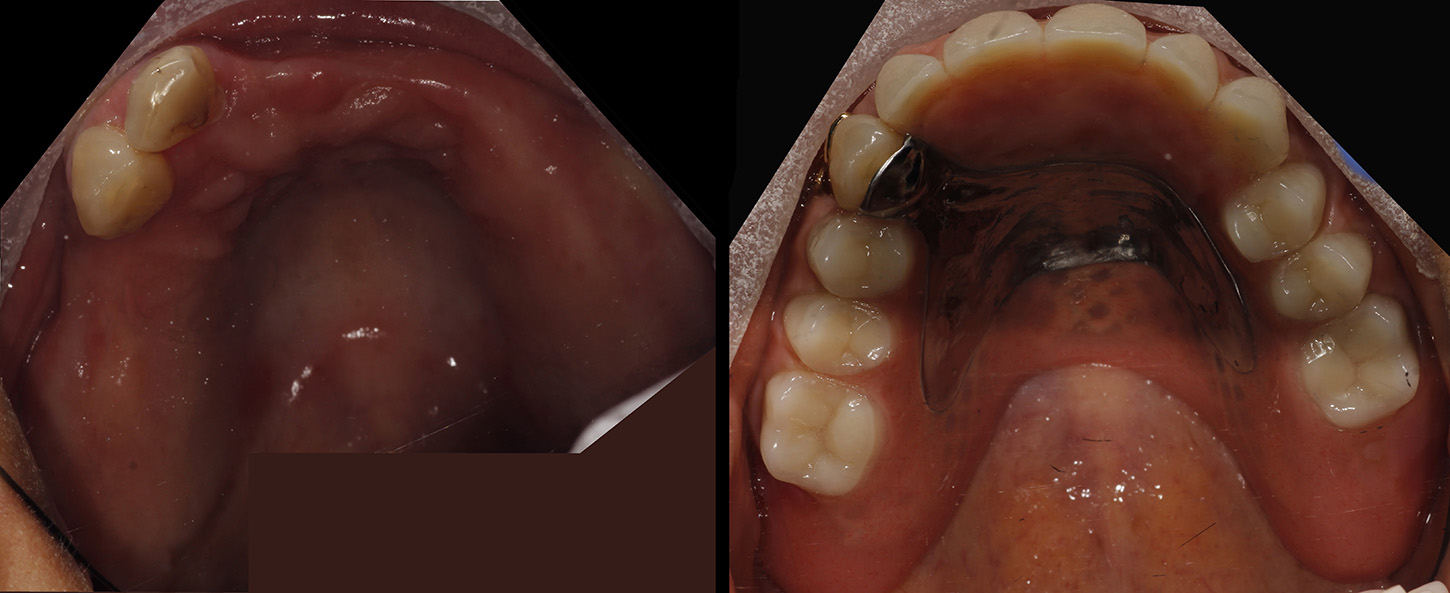

Patient presented with severe wear on both upper and lower teeth. There is significant enamel loss and loss of tooth height, and many other crowns failing with decay underneath. In this situation the first thing we need to do is assess the primary cause of this wear. We are going to need to rebuild the entire mouth and need to ensure what we do outlasts nature so diagnosing the cause, analysing and planning the bite is the first and most important step.

We decided to first replace some of the lost height as the teeth had worn down, and thus change the bite to one where the muscles are relaxed and in a stable position so the dental work functions properly. This was done via some CADCAM design:
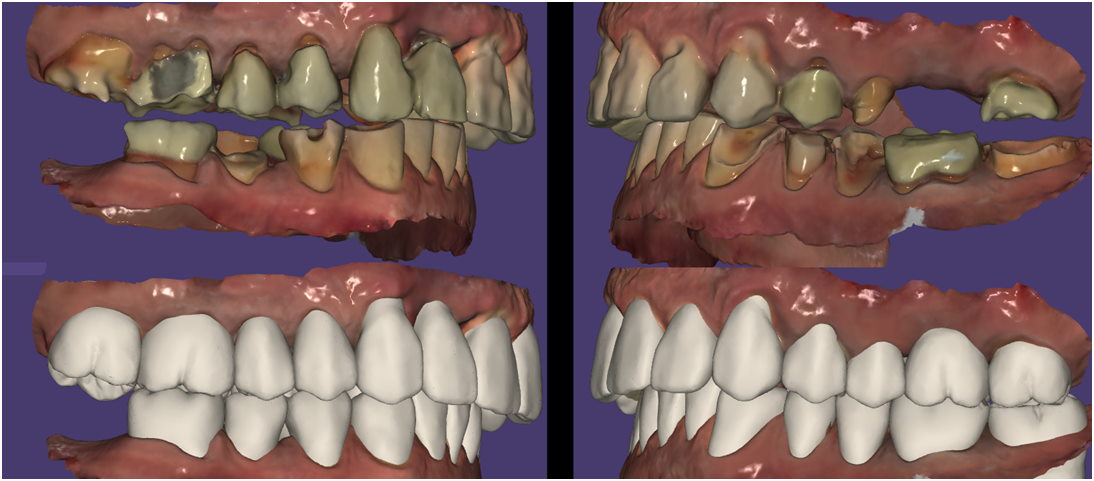
The lower left teeth were severely damaged. This back tooth was so badly worn down the nerve was almost exposed, and is visible. We raised the vertical height of the tooth by 1.1mm at the back. So the gold onlay was bonded to the tooth with no reduction of tooth needed. As we built on top of the back tooth, we prop the rest of the mouth open so at the same time we restore the rest of the badly damaged teeth. Wherever possible we keep our work minimally invasive with use of bonded restorations rather than old-style crowns, which are more destructive to tooth structure.
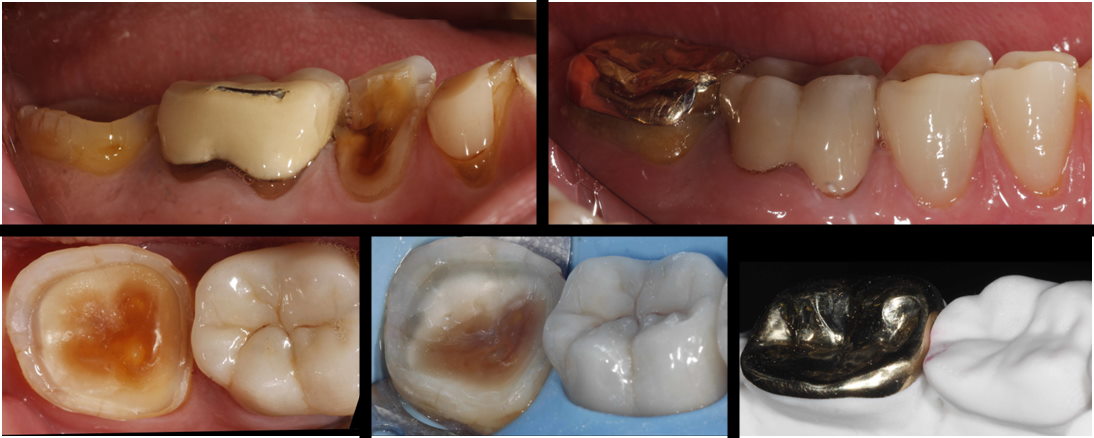
On the lower right side the badly damaged teeth were rebuilt. A post was made to go into the root which would help retain the new crown. This is a really great option as we get to save this tooth despite it being so badly damaged. There was significant decay under most of these old crowns which needed restoring first.
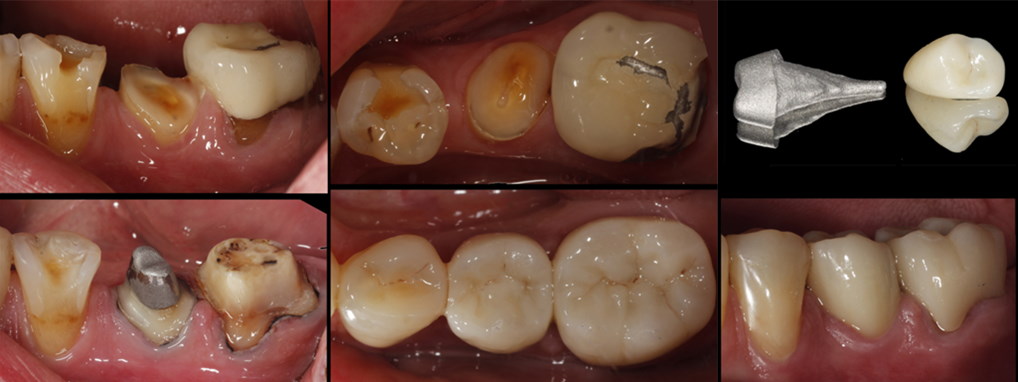
At the top left side, there was a missing tooth and two badly damaged teeth. Dr Andreas Jahingen placed a dental implant and these we restored with new crowns.

As the jaw is a hinge this opened up around 3mm at the front. The front teeth were rebuilt by hand with direct composite bonding.
The final finish was excellent with excellent aesthetics, and comfortable bite position. The implants also allowed more teeth for chewing. Patient was extremely satisfied with the end result and his new smile.
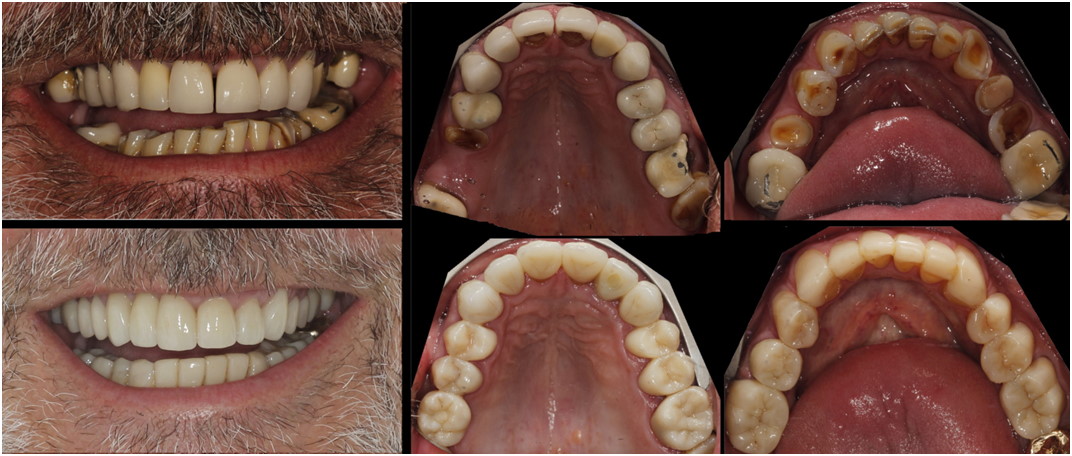
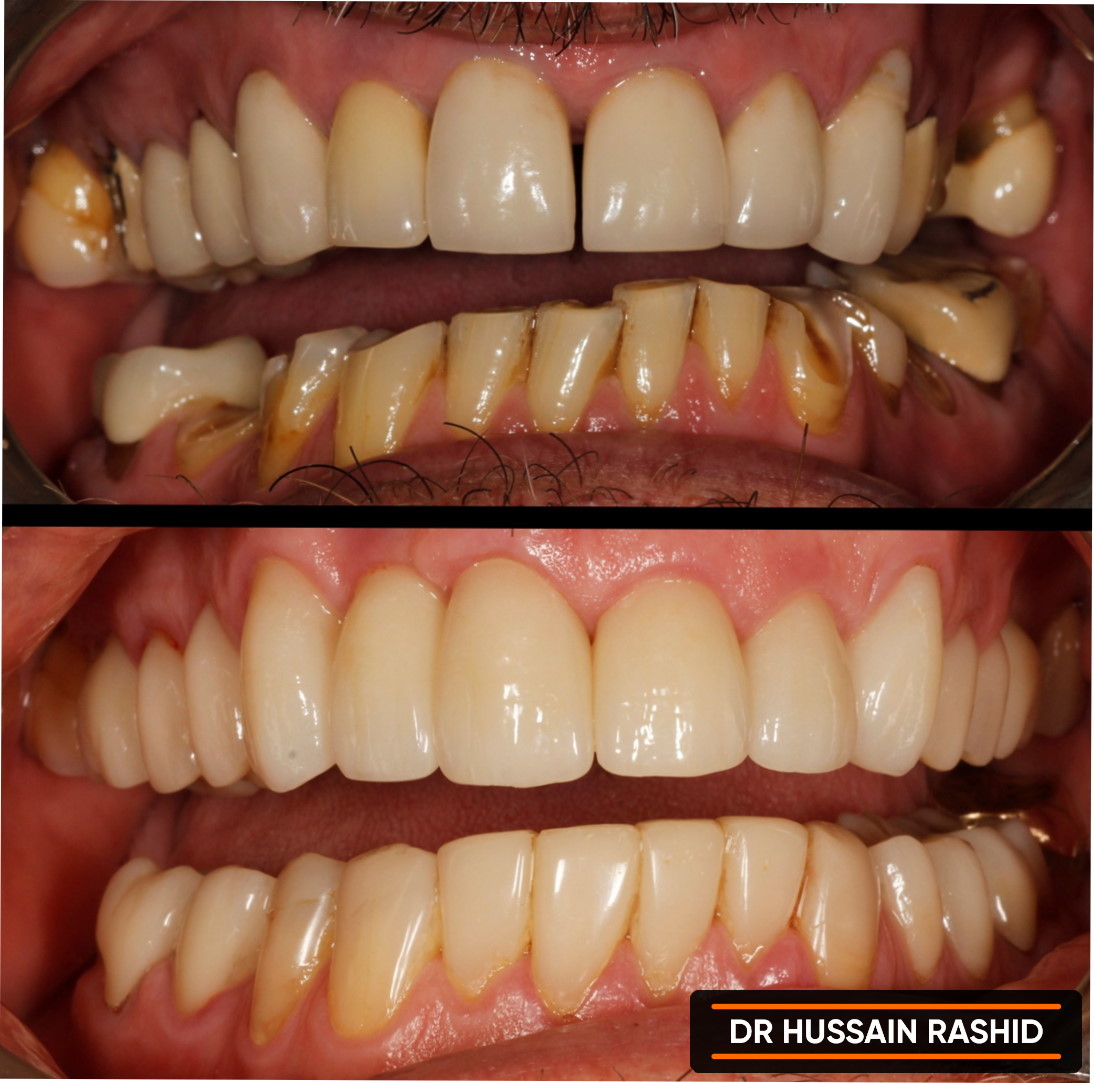

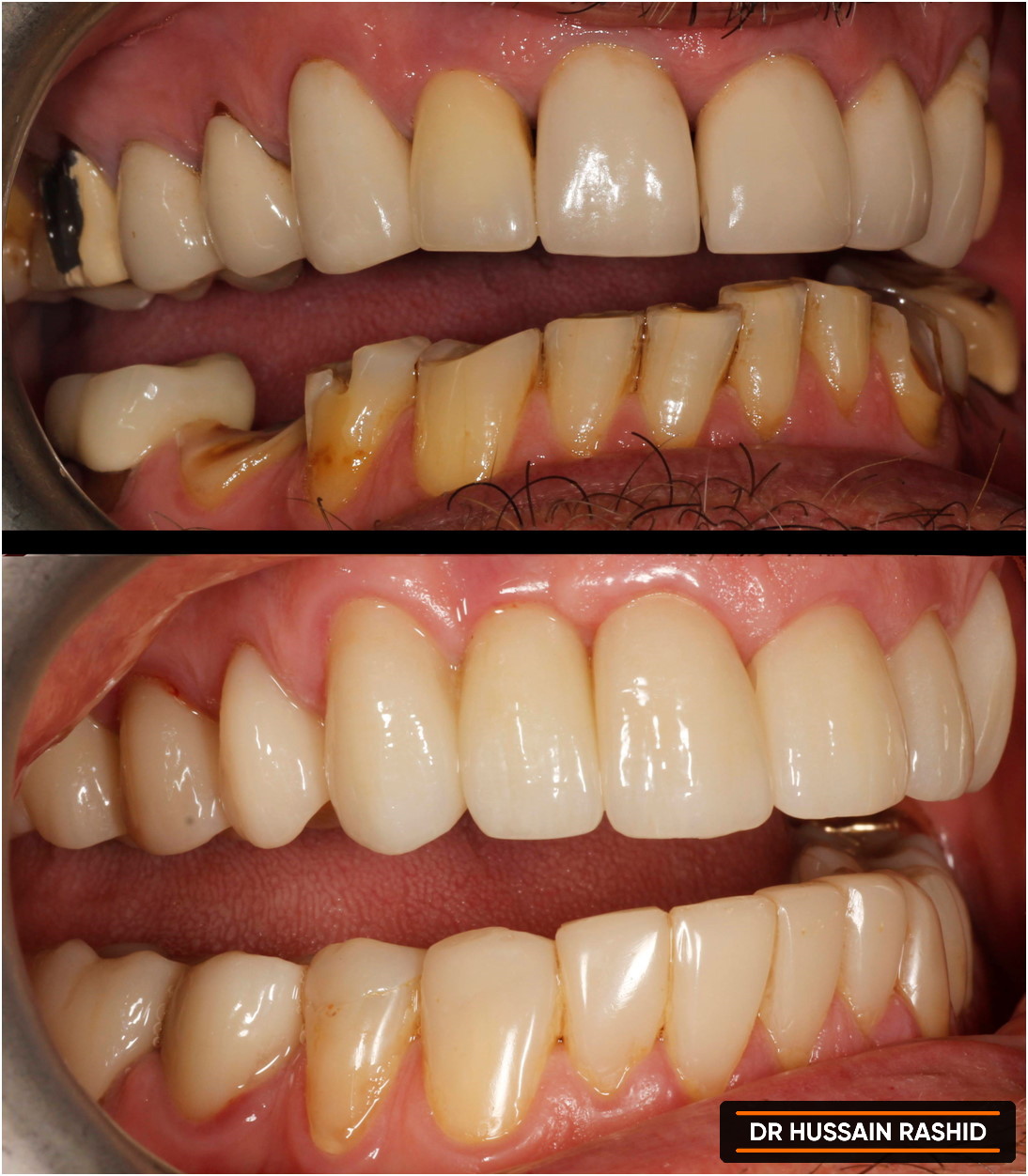


Patient was extremely self conscious about smile when she came in. She had previous bonding between the Upper front teeth which made them look too wide and unproportional. Also a Gap had opened between upper centrals. Patient also had very narrow lateral incisors (the ones next to the central ones).
We digitally planned how we want the teeth to look after treatment and devised a plan including Invisalign to move the teeth into this position.
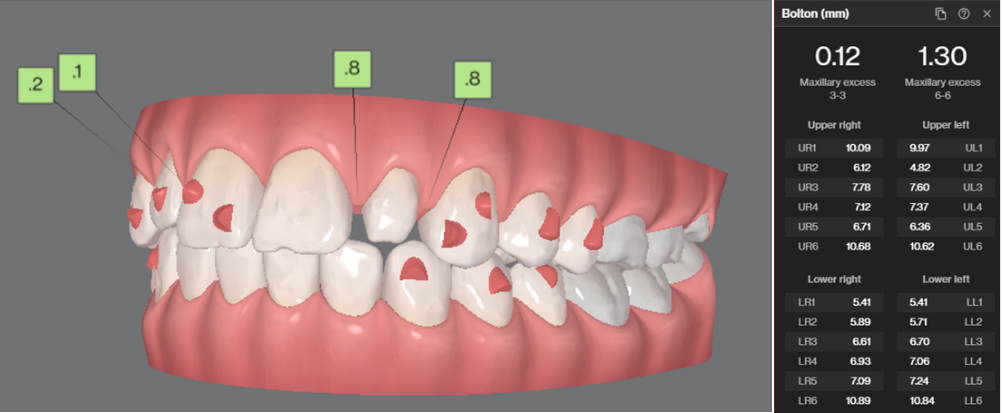
We set up the movement of the teeth to have some spaces between the teeth so we can get the correct proportions for the teeth so the smile looks harmonic. This involves making all the teeth a bit wider which we can do with minimal reduction porcelain veneers.
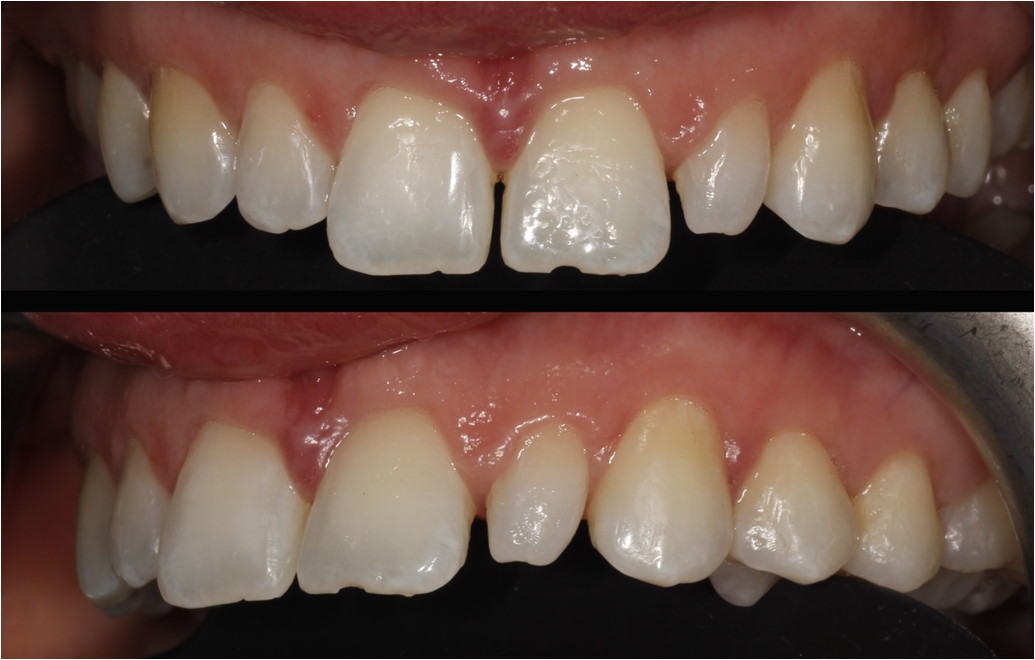
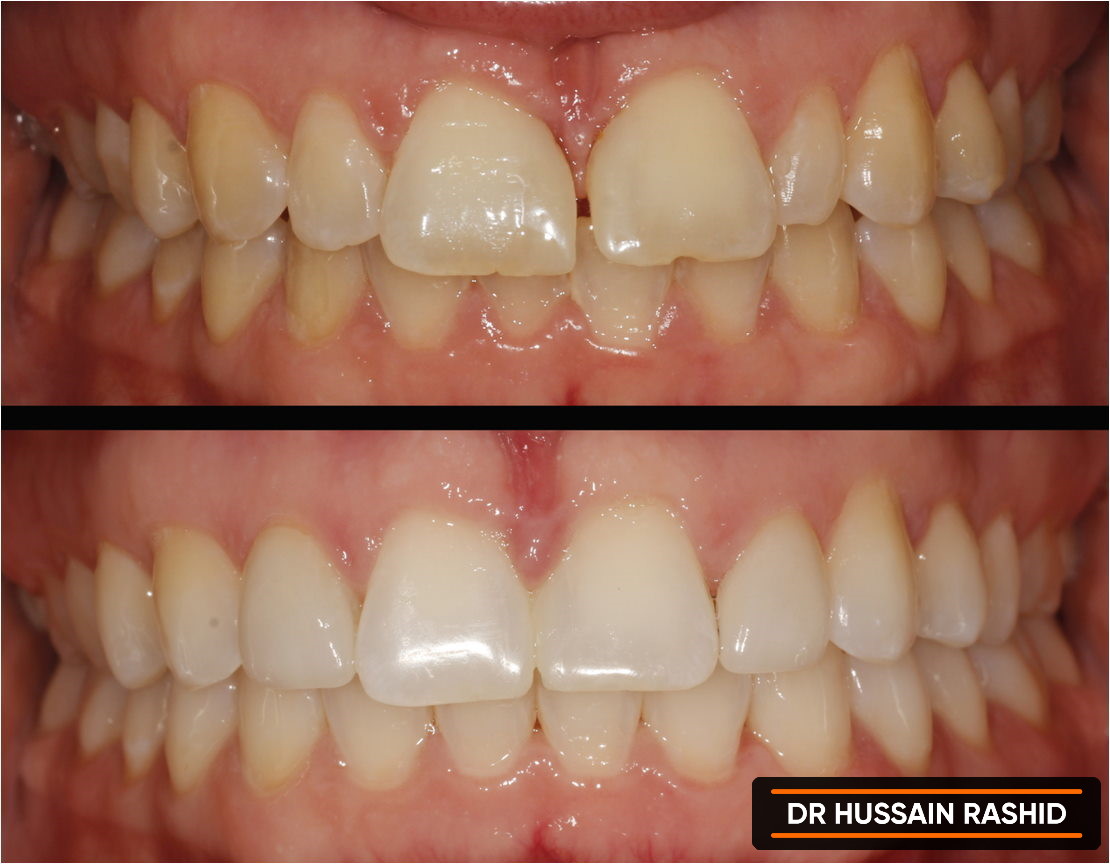

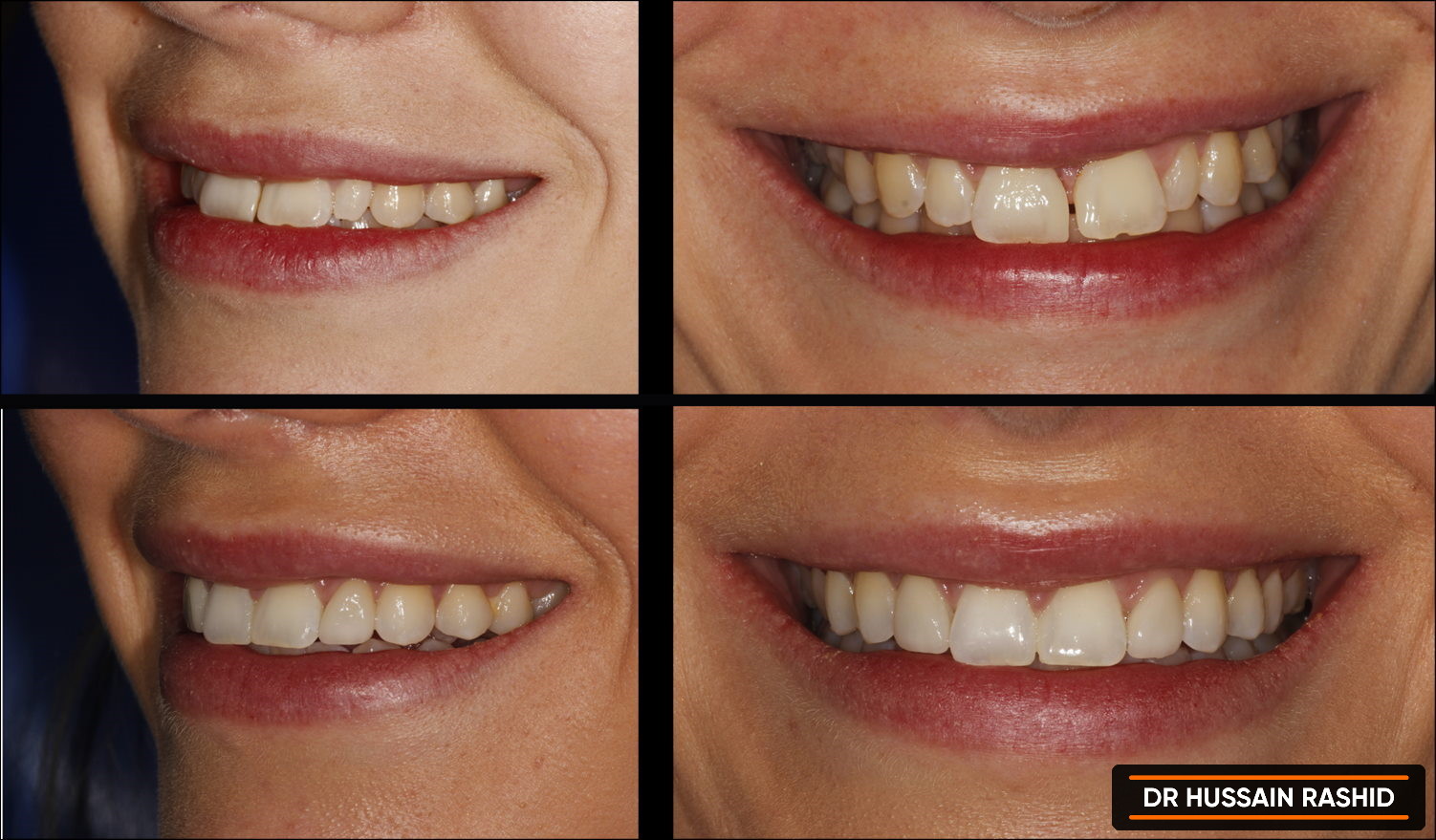
Patient was extremely happy afterwards and felt so much more confident with her new smile.